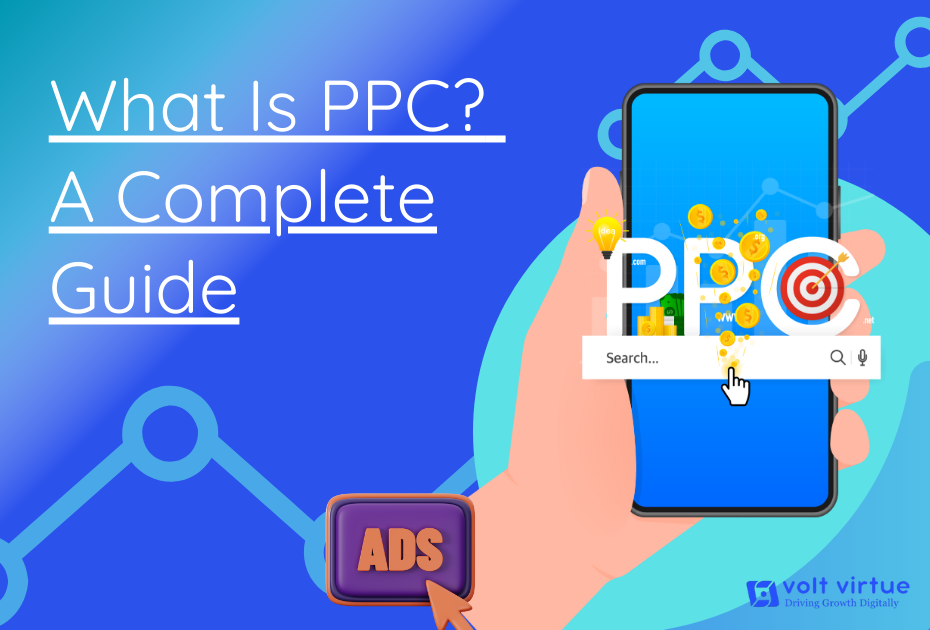
Are you searching for an answer to the question, ‘What is PPC?’ You’re in the right place! If you’ve ever used Google, you’ve likely encountered pay-per-click (PPC) ads. You might have even clicked on some of these ads, which appear above the organic search results on search engine results pages (SERPs). You may have also noticed PPC display ads or PPC ads on social media platforms.
But what exactly are these ads? What does ‘pay-per-click’ mean? Keep reading to discover the meaning of PPC, understand how pay-per-click advertising works, and follow a step-by-step guide to launching your first PPC ad campaign.
What is PPC?
PPC, or Pay-Per-Click, is a digital advertising model where advertisers are charged only when their ad is clicked. If a user sees the ad but doesn’t engage with it, there’s no cost to the advertiser.
With PPC advertising, you set specific goals for your campaigns and create ads designed to generate leads or sales for your business. When someone from your targeted audience or someone searching for your targeted keywords sees your ad, it will be displayed to them. When someone clicks on your ad, you pay for that specific click—hence the name Pay-Per-Click.
PPC advertising is a powerful tool for driving traffic to landing pages or websites and increasing leads for businesses. These ads are typically shown to users based on their specific search queries. For instance, if someone searches for ‘sports watch,’ PPC ads from retailers selling sports watches may be displayed.
To have their ads displayed, businesses bid on specific keywords in an ad auction, which ultimately determines the cost they pay per click. While this process may seem complex, we’ll delve into key terms and concepts to help you better understand how PPC advertising works.
PPC is the most common form of advertising on search engines and is increasingly found on various social media platforms. The concept behind this type of advertising is to drive potential customers to a product, website, or landing page through paid means, with the goal of generating sales or raising awareness.
How Does PPC Work?
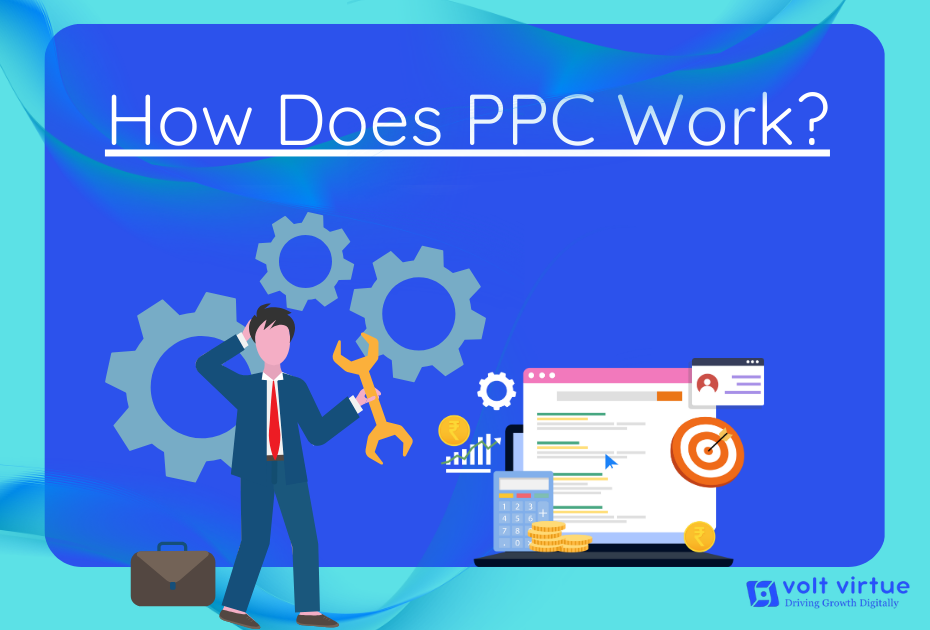
PPC Marketing may seem complex at first, but it’s relatively straightforward. Here’s a quick overview of how PPC ads work:
- Campaign Creation: PPC marketers create campaigns using platforms like Google Ads or Facebook Ads. Depending on the platform, you can configure various settings, such as targeting specific audiences, defining campaign goals, choosing ad placements, and more.
- Budget Setting: Prior to launching a campaign, you establish a budget to define how much you’re willing to invest.
- Ad Creation: You design different types of ads (text, video, display, shopping ads).
- Campaign Launch: Once your campaign is ready, you launch it and enter the ad auction.
- Cost Per Click: You’ll pay a fee each time a user clicks on one of your ads.
During the ad auction, a complex algorithm determines which ads to show to users and sets the cost per click (CPC). Google Ads uses a scoring system called AdRank, calculated using the formula:
Maximum Bid × Quality Score.
- Maximum Bid: The highest amount the advertiser is willing to pay for an ad click.
- Quality Score: This measures the quality and relevance of your keywords and ads, assigning a rating from 1 to 10. A higher Quality Score can lead to lower costs and improved ad placement.
The components of Quality Score include:
- Expected Click-Through Rate (CTR): Estimates the probability that your ad will be clicked when displayed.
- Ad Relevance: Assesses how well your ad aligns with the user’s search intent.
- Landing Page Experience: Assesses the relevance and usability of your landing page.
- Ad Assets: (formerly Ad Extensions) Enhance your ad’s appeal and usefulness to users, potentially increasing its click-through rate. Ad assets consist of features like click-to-call buttons, product pricing, promotional offers, sitelinks, callouts, and other enhancements.
It’s important to understand that your ads won’t always appear exactly where you want. Ad placement depends on competition, your budget, and how well your campaigns are optimized.
How PPC Works in Google Ads
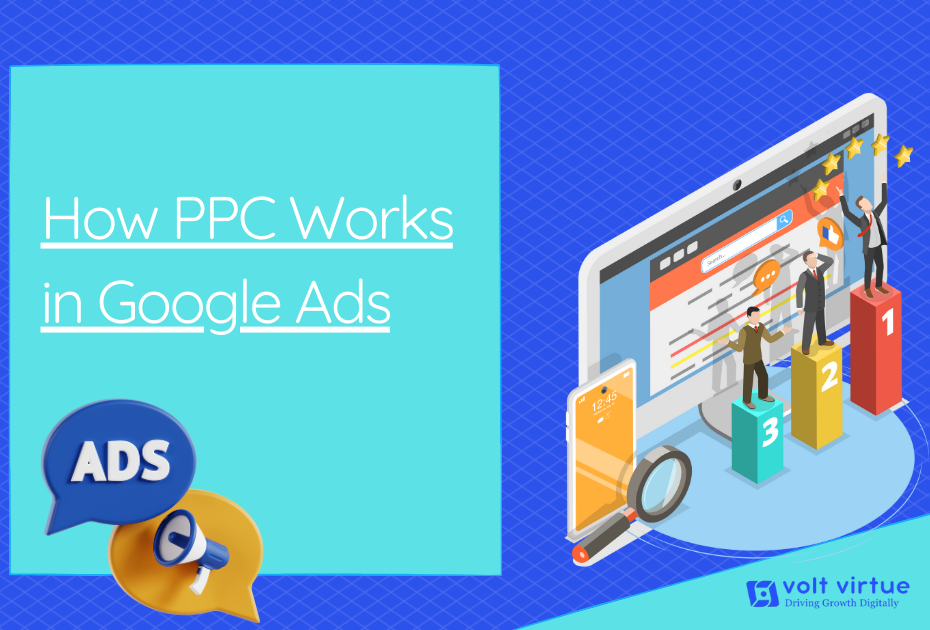
When advertisers create an ad in Google Ads, they select a set of keywords to target and place a bid on each. For example, by bidding on the keyword “sport watch,” you’re indicating to Google that you want your ad to show up for searches related to sport watch.
Google then uses a combination of formulas and an auction-style system to determine which ads appear for a given search. First, Google evaluates the eligibility of your ad for the auction and assigns it a Quality Score ranging from 1 to 10. This score is based on several factors, including the relevance of your ad to the keyword, expected click-through rate (CTR), and the quality of your landing page.
Next, Google multiplies your Quality Score by your maximum bid (the highest amount you’re willing to pay for a click on your ad) to calculate your Ad Rank. Ads with the highest Ad Rank scores are the ones displayed.
This system allows advertisers to compete for visibility in a way that balances budget considerations with ad relevance and quality. In essence, Google Ads operates like a dynamic auction, ensuring that the highest-ranked ads are shown to users, while helping advertisers manage costs effectively.
How to Do PPC with Google Ads
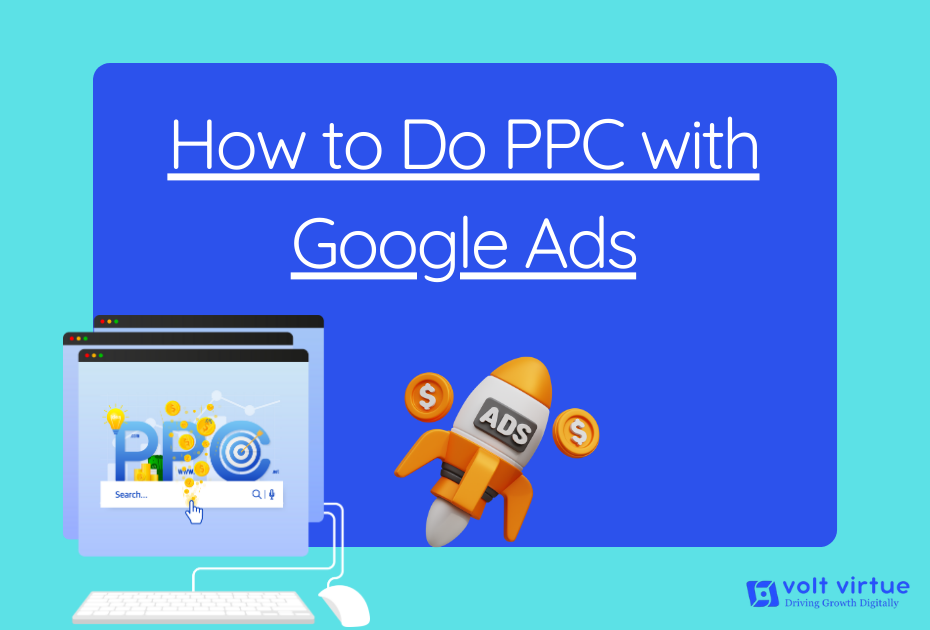
Running a PPC campaign through Google Ads is highly effective because Google is the most popular search engine, delivering a vast number of impressions and clicks. The frequency with which your ads appear depends on your keyword selection and match types. While various factors influence the success of a PPC campaign, the following strategies can help you maximize results:
- Bid on Relevant Keywords: Build relevant PPC keyword lists, create focused keyword groups, and write compelling ad text. Ensure that your keywords are aligned with your business objectives and resonate with your target audience.
- Focus on Landing Page Quality: Optimize landing pages with persuasive and relevant content, ensuring there’s a clear call to action tailored to specific search queries. A well-designed landing page improves user experience and encourages conversions.
- Improve Your Quality Score: Google’s Quality Score assesses the relevance and quality of your keywords, ads, and landing pages. Higher Quality Scores lead to more clicks at lower costs, increasing the overall effectiveness of your campaign.
- Capture Attention: Enticing ad copy is critical for search ads, while eye-catching visuals are crucial for display and social ads. Ensure your creative content grabs attention and encourages engagement.
Why Is PPC Marketing Important?
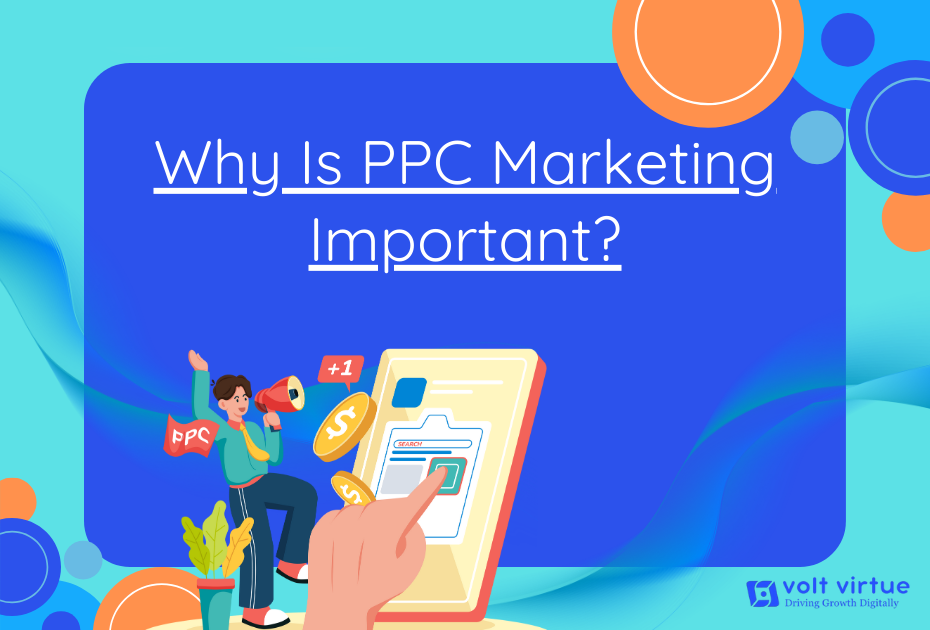
PPC advertising offers businesses a fast, cost-effective, and efficient method to attract customers. Compared to other advertising methods, PPC offers several distinct advantages.
PPC Ads Deliver Rapid Results
While SEO strategies are excellent for long-term growth, it can take months or even years to achieve top rankings on SERPs organically. In contrast, well-optimized PPC ads appear at the top of search results almost instantly, driving immediate traffic and leads.
Easy A/B Testing
PPC tools like Google Ads enable companies to run A/B tests with different ad variations, experiment with CTAs and copy, and identify the strategies that yield the highest return on investment.
PPC Ads are Highly Targeted
While SEO allows for targeting specific customers with carefully selected keywords, PPC ads offer even more precise targeting options. You can tailor your ads to reach customers based on specific behaviors, buying preferences, and more. Additionally, retargeting ads can be created to bring back customers who have previously visited your site.
Fewer Algorithm Changes
Google’s algorithm frequently updates, often impacting SEO campaign performance. However, these changes don’t affect PPC campaigns in the same way. With PPC, you can continue to rank well regardless of factors like domain authority, and your strategy doesn’t require constant adjustments.
Brand Awareness
PPC is one of the most effective tools for generating brand awareness and recognition. With the right campaigns, you can position your business in front of potential customers at every stage of their purchasing journey, enhancing your credibility and authority in your industry.
PPC Ads Are Cost-Effective
The cost of PPC ads can vary depending on several factors, but PPC provides greater control over your budget. You can decide exactly how much you’re willing to pay for each click, and with consistent measurement, you can ensure your ads are delivering a strong return on investment.
PPC Ads Complement Other Marketing Strategies
While PPC can be a powerful standalone tactic, it’s most effective when combined with other marketing efforts. For instance, using PPC alongside SEO can significantly enhance your online presence. Moreover, the data gathered from PPC campaigns can inform and refine your SEO strategy, helping you create more compelling, targeted content.
Benefits of PPC Marketing
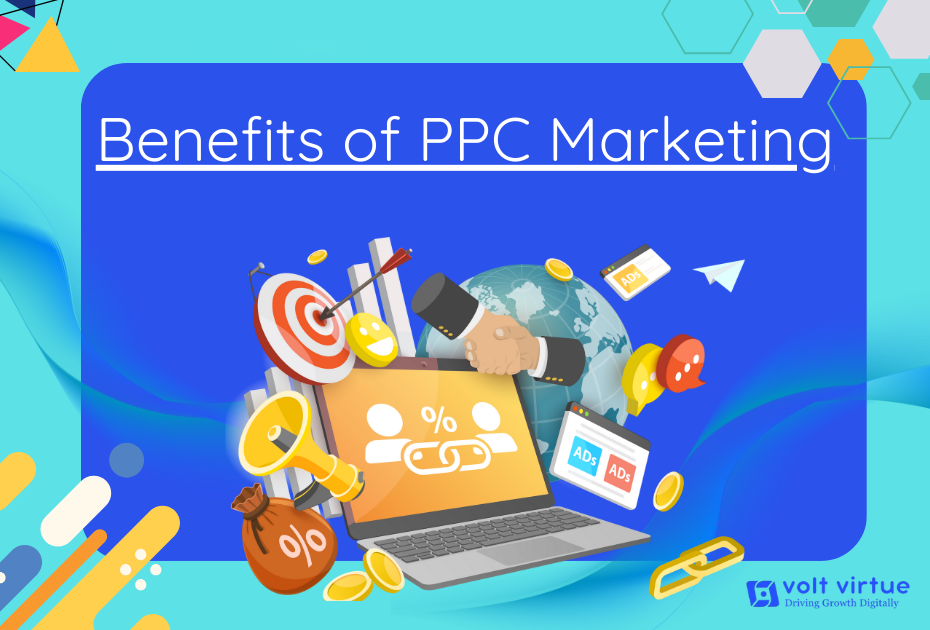
PPC marketing provides several key advantages that make it a compelling choice for businesses of all sizes:
- Immediate Results: Unlike SEO, which can take months to yield results, PPC campaigns can start generating traffic and leads within the first week of launch.
- Measurable and Trackable: PPC platforms offer advanced analytics and detailed reporting systems that enable real-time monitoring of your campaigns. You can identify which ads perform best, which keywords drive traffic, and the cost per click, helping you fine-tune your strategy.
- Targeted Advertising: PPC enables you to display your ads to a highly specific audience. You can reach your ideal customers based on factors like location, language, and time of day, ensuring your ads are seen by the right people.
- Cost-Effective: PPC advertising is cost-efficient because you only pay when someone clicks on your ad. Moreover, you can manage and control your investment to maximize return on ad spend.
- Increased Website Performance: A faster-loading website, often supported by an unmetered VPS, enhances user experience and can improve the quality and position of your ads in search results.
Components of Paid Search and PPC
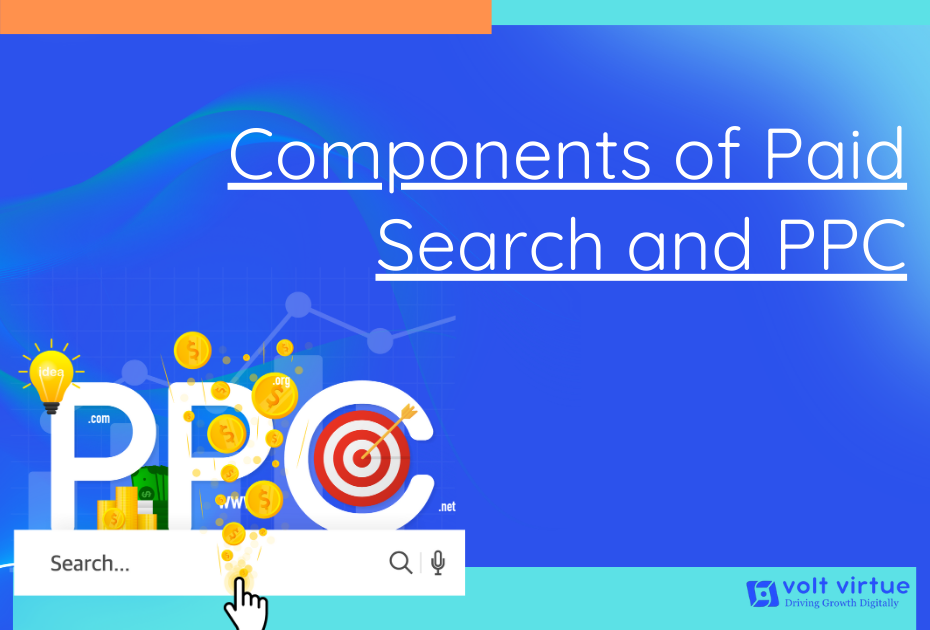
As you delve into PPC marketing, you’ll encounter several key concepts. Here are key components of a paid search campaign that you should be familiar with before starting:
Campaign Budget
You can set an average daily budget for your campaign based on your desired spending. Keep in mind that Google Ads may spend up to twice your daily budget on any given day, but it won’t exceed your total monthly budget.
Google assumes a month has 30.4 days. You can use this figure to calculate your average daily budget based on your monthly budget:
Daily Budget = Monthly Budget ÷ 30.4
For instance, if you want to keep your monthly ad spend under $1,000, set your daily budget to approximately $32.89.
Cost
The cost of your PPC ads depends on the competitiveness of the auction and the performance of your ads. However, you have control over your spending.
You set a maximum CPC (Cost Per Click), which is the highest amount you’re willing to pay for each click on your ads. Since it’s an auction, you often won’t pay the full amount of your maximum CPC.
You’ll only pay enough to meet the Ad Rank threshold (the minimum price required for your ad to be shown) and outbid competitors below you. This means you may end up paying significantly less than your maximum CPC.
Campaign Structure
Your PPC account is organized into campaigns, ad groups, and keywords.
Campaigns
Each campaign encompasses multiple ad groups. Typically, you’ll have only a few campaigns in your account (unless you’re a large global brand).
Campaigns are generally organized by specific goals, targeting criteria, ad types, or budget allocation. For instance, if you’re managing ads for a car dealership, you might create separate campaigns for “used cars” and “new cars” to manage budgets, targeting, and other settings independently.
Ad Groups
An ad group is a collection of ads triggered by a single set of related keywords. These groups are typically organized around a common theme or category, beginning with the keyword list for a particular ad. For example, if your website sells shoes, you could group all ads for running shoes into a single ad group, using keywords specifically related to running shoes. Additional ad groups could be created for boots, sneakers, etc., each triggered by a different set of related search terms.
Keyword Research
To ensure your ads perform well and drive traffic to your website, it’s crucial to identify the right search terms for your brand. Tools like Google Keyword Planner, Semrush, or Ahrefs can help you research keywords and evaluate your top choices based on metrics like cost-per-click (CPC) and click-through rate (CTR). The CTR indicates the percentage of people who view an ad and click on it, while CPC provides insight into how much you’ll spend per click on a given keyword.
Ad Auctions
In paid search, PPC ads are shown when search engines identify that a user’s query has commercial intent. When this occurs, an ad auction is triggered automatically. To participate, you must set a maximum CPC beforehand, as bidding doesn’t occur in real time. You can set these maximums for specific keywords or entire ad groups.
When someone searches for a relevant keyword, your ad is ranked against others bidding for that phrase. The search engine evaluates your maximum CPC and the relevance of your business to the search query to determine your ad rank. The aim is to display ads that users are likely to click on, so ad relevance helps ensure your ad reaches the right audience.
Winning ads are displayed on the search engine results page (SERP), and the winners are charged based on CPC. It’s essential to have a clear bidding strategy to keep your ad costs within your budget, but your bid will never exceed the maximum amount you set.
Ad Quality Score
This metric measures how well your ad and website meet user expectations and provide a positive user experience. The Quality Score is based on how relevant your ad and its corresponding landing pages are.
For example, Google assigns a Quality Score on a scale from 1 to 10, which estimates the effectiveness of your ad in auctions. Although the quality score itself doesn’t directly impact your ad’s ranking in auctions, it’s a valuable tool for identifying ads that may need improvement. While ad quality doesn’t affect your bidding, it does influence whether your ad is shown and where it appears on the page, making it a crucial factor in any paid search strategy.
Budgeting and Bidding Strategies in PPC Management
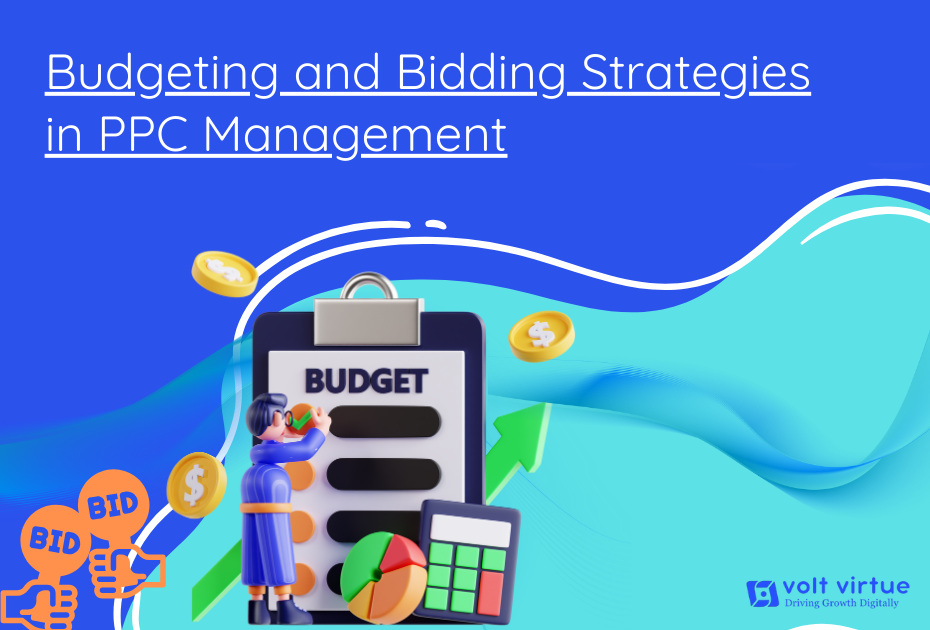
Setting Your PPC Budget
Start by establishing your total budget based on your campaign goals and available resources. Allocate funds across different campaigns and make adjustments as needed based on performance metrics. Consider factors like the average cost-per-click (CPC) for your chosen keywords, your conversion rate, and your desired return on investment (ROI).
Types of Bidding Strategies
Manual CPC Bidding
Manual CPC bidding allows you to set a maximum cost-per-click (CPC) amount for your ads. This strategy provides precise control over your spending but requires more monitoring and frequent adjustments. It’s ideal for advertisers who prefer hands-on management of their bids.
Automated Bidding
Automated bidding leverages machine learning to adjust your bids in real-time, aiming to maximize results based on your set goals. Common automated strategies include:
- Maximize Clicks: Automatically sets bids to generate as many clicks as possible within your budget.
- Maximize Conversions: Adjusts bids to achieve the highest number of conversions within your budget.
- Maximize Conversion Value: Focuses on maximizing the total value of conversions while remaining within your budget.
Enhanced CPC
Enhanced CPC (ECPC) is a hybrid strategy that adjusts your manual bids to maximize conversions. It adjusts bids by increasing them for clicks with a higher likelihood of conversion and decreasing them for those with a lower likelihood of converting.
Target CPA
Target CPA (Cost Per Acquisition) bidding sets bids to try to achieve as many conversions as possible at your target CPA. This strategy allows you to manage costs effectively while targeting a specific cost per conversion.
Target ROAS
Target ROAS (Return on Ad Spend) bidding seeks to achieve a specific return on the amount spent on ads. It adjusts bids to optimize revenue based on the value of conversions, making it perfect for advertisers focused on maximizing revenue rather than simply increasing the number of conversions.
Bid Adjustments
Device Bid Adjustments
Adjust bids based on the devices users are using, such as desktops, tablets, or mobiles. This strategy is useful if your ads perform better on specific devices. For example, if you notice a higher conversion rate on mobile devices, you can increase your bids for mobile users.
Location Bid Adjustments
Increase or decrease bids based on geographic locations to target areas where your ads are most effective. If certain regions show higher conversion rates, allocate more budget to those locations.
Time of Day Bid Adjustments
Adjust bids according to the time of day or week to optimize ad spend during peak performance periods. Analyzing performance data will help you determine when your audience is most active and likely to convert, allowing you to focus your budget on those periods.
How to Create a PPC Campaign
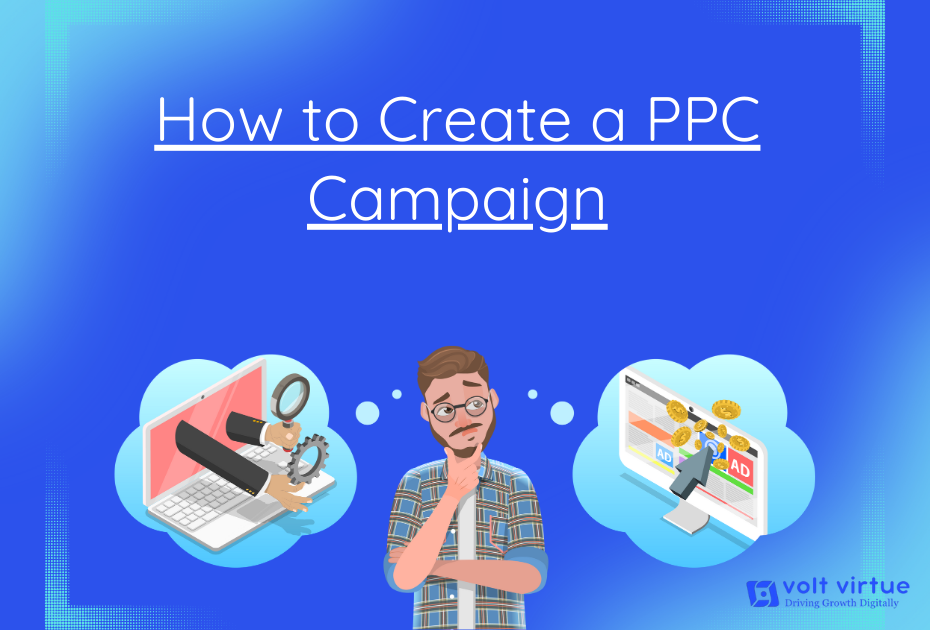
Creating a successful PPC campaign involves several essential steps:
- Setting Objectives: Clearly define your campaign goals, such as increasing website traffic, generating leads, or boosting sales.
- Keyword Research: Identify the keywords potential customers use to search for products or services similar to what you offer. Tools such as Google Keyword Planner can assist in identifying valuable keywords. Regularly track their search volume and estimated cost-per-click.
- Creating Ad Copy: Craft compelling ad copy that captures your audience’s interest and encourages them to click on your ad. Ensure your copy is relevant to the targeted keywords and includes a strong call to action.
- Budgeting and Bidding: Set your overall budget for the campaign and allocate daily or monthly spending limits. Next, set your bids for each keyword, indicating the maximum amount you’re willing to pay per click in the auction.
Types of PPC Ads
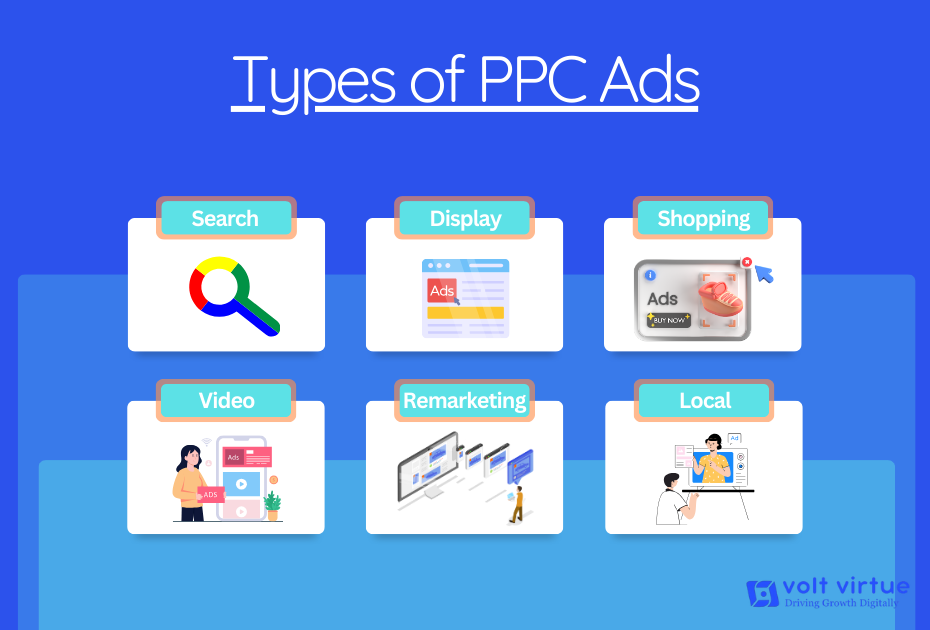
The most common types of PPC ads are:
Search Ads
These are the most prevalent form of PPC ads, appearing on search engine results pages (SERPs) such as Google and Bing. Typically text-based, they may also include images and are displayed above the organic search results. Search ads are triggered by users searching for relevant keywords or phrases, making them effective for building brand awareness, driving traffic to your website, and generating leads.
Display Ads
These ads feature images, text, and animations and appear on websites within the Google Display Network. This network encompasses Google products (like Gmail and Discover) and millions of participating websites through the Google AdSense program. Display ads are an effective way to showcase deals, offers, and sales.
Shopping Ads
These ads appear in carousels at the top of search pages, displaying images, prices, merchant names, reviews, and special offers. To run shopping ads, you need to set up a Google Merchant Account and provide Google with detailed information about your products. Shopping ads also appear on Google Discover, Gmail, Maps, and other Google properties.
Video Ads
These ads are often featured on platforms like YouTube and can also appear across the Google Display Network. Video ads can vary in length, from short clips of 3 seconds or more, and are typically played before, during, or after video content. They can appear in YouTube search results..
Remarketing Ads
These ads aim to re-engage users who have previously visited your website but left without completing a desired action. Remarketing ads help bring back these potential customers, making them effective for nurturing leads and reducing cart abandonment.
Local Ads
These ads are designed to target a specific geographic audience and can appear on search engine results pages or within the “Google Maps” section of Google search results. They are ideal for promoting local businesses and driving traffic to physical locations.
The Main PPC Platforms
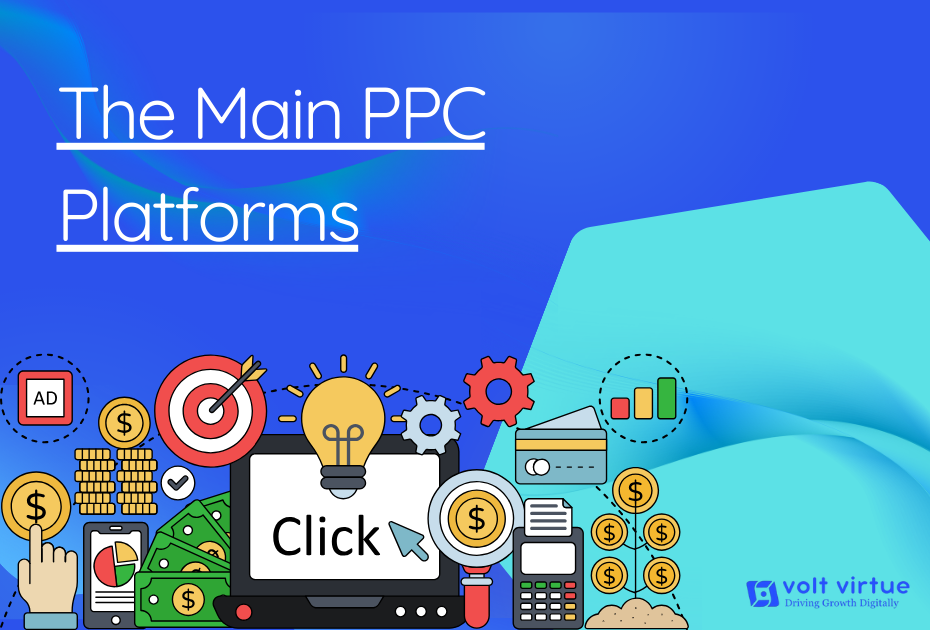
Google is the dominant force in PPC advertising. You’ll find PPC ads across various Google services, including standard Google searches, Google Shopping, and other Google-owned platforms. On Google, advertisers bid on keywords, and the highest bidder secures the advertising slot. However, it’s not just about the bid amount; factors such as keyword relevance, the click-through rate (CTR) of previous campaigns, and the quality of the landing page also contribute to the ad placement. These elements collectively determine the Quality Score, which plays a crucial role in deciding who gets the top spot.
Facebook and Instagram
Facebook is an increasingly popular platform for PPC advertising, offering a wide variety of ad formats, from carousel ads to video ads. Instagram, which is owned by Facebook, also provides a similarly diverse range of PPC options. Unlike Google, Facebook allows advertisers to target specific demographics, making it easier to reach the desired audience. The platform uses a keyword bidding system, but it also gives advertisers control over where, how, and when their ads appear.
Twitter is another viable platform for PPC advertising. The pricing model on Twitter is more complex compared to other social media platforms, as the cost per click depends on factors like your bid, audience size, engagement levels, and competition. Regardless of the campaign type—whether it’s video feed ads, standard feed ads, or hashtag promotions—Twitter uses the same PPC model across all ad formats.
Microsoft (Bing)
Microsoft’s search engine, Bing, also relies heavily on PPC advertising, similar to Google. Advertisers bid on keywords, and those with the most competitive bids and relevant keywords secure the advertising slots. Like Google, Bing’s ad placements are determined by both the bid amount and the relevance of the keywords to the search intent.
YouTube Ads
YouTube Ads provide a distinct opportunity for PPC through engaging video content. This platform enables businesses to capture audience attention with compelling visuals and storytelling, whether before, during, or after viewers watch their favorite videos.
Thanks to YouTube’s extensive and diverse user base, your ads can reach a broad range of demographics. You can target specific interests that closely align with your product or service, making it easier to connect with the right audience.
TikTok Ads
TikTok is a rapidly growing social platform, making it an ideal space to reach a younger, highly engaged audience through TikTok Ads.
This platform thrives on creativity and trends, offering brands a unique opportunity to connect with users through short, attention-grabbing videos.
TikTok’s algorithm can propel even ads to viral status, giving businesses a chance to make a significant impact with creative storytelling that resonates with its fast-growing, content-hungry audience.
Pay-Per-Click Marketing Tips and Strategies
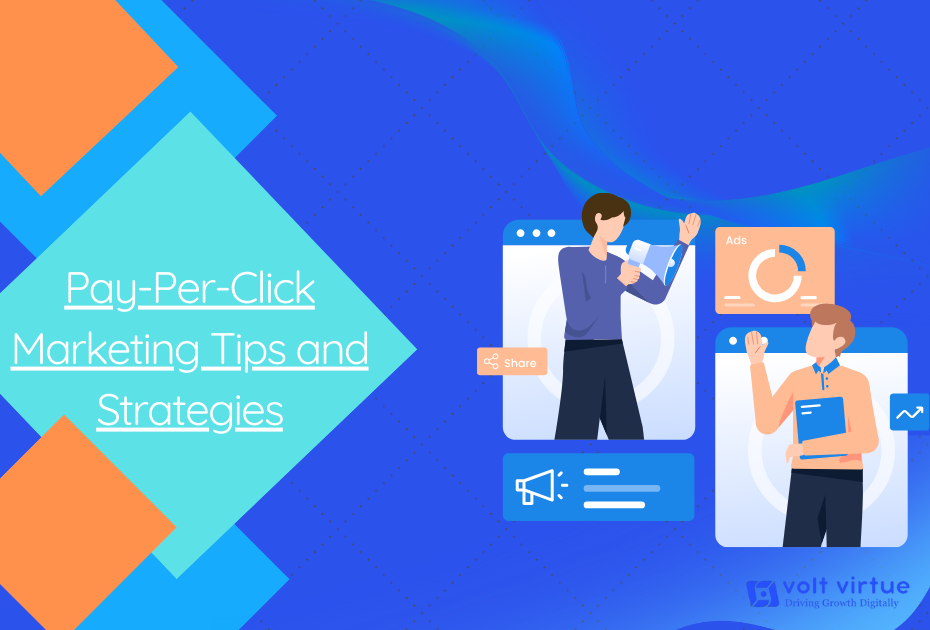
1. Setting Clear Goals for PPC Campaigns
The foundation of a successful PPC campaign is setting clear, achievable goals. Your objectives could include increasing website traffic, boosting sales, or enhancing brand awareness. The type of PPC format and platform you select should align with these goals.
For example, if your goal is to increase online sales by 20% within three months, this provides a specific target and helps measure success. Goals should be SMART. Well-defined objectives guide your marketing strategy, ensuring every click contributes meaningfully to your business’s larger vision. It’s not just about accumulating clicks; it’s about generating clicks that drive results.
2. Choosing the Right PPC Platform
After defining your goals, selecting the right platform is crucial for effective PPC marketing. The platform you choose should align with where your target audience is most active.
For instance, LinkedIn is ideal for reaching professionals, while Google Ads and Facebook are better suited for a broader audience. Google Ads excels in capturing high-intent traffic, while social media platforms are effective for brand awareness and engagement. Consider using ad verification proxies to ensure the authenticity of your ad placements and guard against fraudulent activity.
Evaluate each platform’s strengths and determine where your ads will have the most impact. For example, a visually appealing product might perform better on Instagram, whereas a B2B service could see more success on LinkedIn.
3. PPC Keyword Research
Effective keyword research is essential for the success of your Google Ads campaigns. It involves pinpointing the terms potential customers use when searching for products or services similar to yours. Proper keyword research ensures that your ads reach the right audience, driving relevant traffic to your website.
When selecting keywords, prioritize relevance alongside search volume. Consider the user intent behind the keywords: Are they looking to buy or just seeking information? Utilizing long-tail keywords, which are less competitive and more specific, can also lead to higher conversion rates.
4. Creating Effective Ad Copies and Creatives
The core of a PPC campaign lies in its ad copy and creative elements. No matter how precise your targeting or keyword selection, compelling ad copy and creatives are crucial for success.
Ad copies should entice users to click, while display ads and banner ads need captivating visuals. Certain types of videos or creatives might perform better on specific platforms. For example, a video ad that thrives on TikTok may not be as effective on X (formerly Twitter). Ensure your copy and creatives align with the platform’s style and user experience.
5. PPC Campaign Management
PPC marketing requires ongoing management; it’s not a “set it and forget it” strategy. Effective management involves constant monitoring and adjustment due to changing ad platforms, emerging competitors, and shifting user interests.
Regularly analyze your campaign’s performance data to understand what works and what doesn’t. For example, if certain keywords are draining your budget without conversions, consider pausing or adjusting them. Use negative keywords to filter out unwanted traffic and refine your targeting to reach the right audience. Employ A/B testing for various ad elements, such as headlines and images, to determine what performs best.
Active and thoughtful management is essential for maximizing ROI and achieving your marketing objectives.
6. Monitoring PPC Campaign Performance
Monitoring your PPC campaign performance is vital for success. Monitor key metrics like click-through rate (CTR), cost per click (CPC), and conversion rate to assess the effectiveness of your campaign.
For instance, a high CPC with low conversions may indicate the need to refine your ad targeting or adjust your bidding strategy. Use the analytics tools provided by ad platforms to explore user behavior and campaign outcomes.
Regular monitoring enables data-driven decisions, such as reallocating the budget to high-performing ads or revising ad copy to improve engagement. Consistently analyzing and tweaking your campaigns based on performance insights will optimize results and increase ROI.
PPC Tools and Software
Managing PPC ads involves detailed monitoring, analyzing, and tracking, which can be overwhelming to handle manually. Fortunately, numerous PPC tools and software are available to simplify this process and optimize campaign performance. Here are some of the top PPC tools on the market:
- HubSpot
- Serpstat
- Ahrefs
- Google Keyword Planner
- Google Trends
- Wordstream
- Google Ads Editor
- Bing Ads Editor
- Facebook Ads Manager
- AdEspresso
- Hootsuite
- SEMrush
Conclusion
PPC marketing is a powerful tool for businesses to boost leads, drive traffic, and increase sales. Understanding the fundamentals of PPC allows you to select the right types of ads and implement best practices to build successful campaigns with substantial returns on investment. Now is the perfect time to explore the potential of PPC marketing and leverage its benefits to enhance your business’s performance.
Frequently Asked Questions About the PPC
1. Are PPC and CPC the same?
Answer: No, PPC (Pay-Per-Click) and CPC (Cost-Per-Click) are related but not identical. PPC is a digital advertising model where advertisers pay each time their ad is clicked. CPC, or Cost Per Click, refers to the actual amount an advertiser pays for each click within a PPC campaign.
2. What is PPC management?
Answer: PPC management involves actively optimizing PPC campaigns. This includes adjusting bids, refining target audiences, conducting keyword research, and other practices to enhance the performance of ad accounts.
3. Is PPC only used with Google Ads?
Answer: No, while Google Ads is a prominent platform for PPC advertising, the concept originated with display advertising sites in the late 1990s. Today, various digital platforms, such as Bing, Meta, and LinkedIn, offer PPC advertising options.
4. How does PPC make money?
Answer: PPC advertising generates revenue by driving web traffic from platforms such as search engines or social networks to a business’s website or dedicated landing page. On these pages, users can make a purchase, start a subscription, or take other desired actions.
